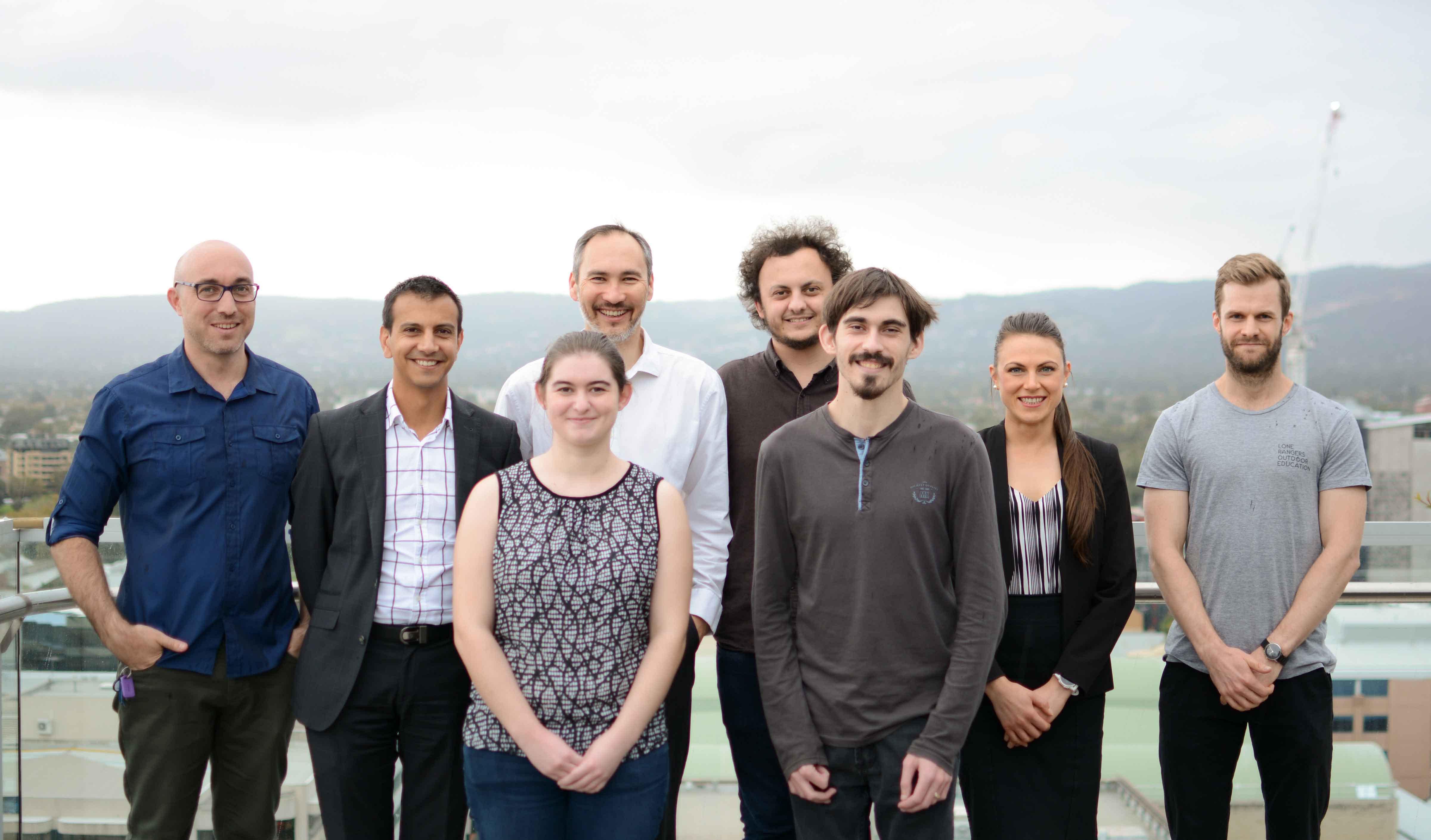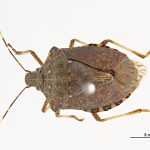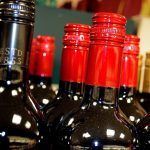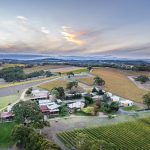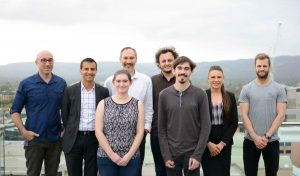
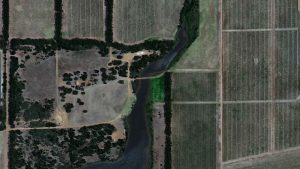
By Sonya Logan
Australia is likely to boast the most accurate record of its vineyards in the world in a matter of months thanks to advanced software that combines high-resolution satellite imagery and artificial intelligence.
Aptly named after the Greek goddess of earth, GAIA stands for Geospatial Artificial Intelligence for Agriculture. As well as being able to locate and measure every vineyard in Australia, GAIA also promises to automatically and regularly measure vine vigour, assisting growers to manage their crops.
GAIA is the brainchild of Adelaidebased digital technology company Consilium Technology whose expertise has to date focussed on the defence, oil and gas, and manufacturing sectors.
Partnering with satellite imagery provider DigitalGlobe, and the University of South Australia, GAIA is Consilium’s first foray into agriculture.
Although the technology behind GAIA has been utilised in other industries, it is believed to be the first time it has been applied to viticulture.
GAIA’s genesis stemmed from inquiries by Wine Australia into whether technologies existed that could provide an accurate assessment of the area planted to vines throughout the country – a tally previously attempted through a survey issued to vineyard owners by the Australian Bureau of Statistics. Notwithstanding the accuracy of the ABS survey was only as good as the information fed to it by survey participants, it was nonetheless provided to industry at virtually no cost.
Then a few years ago the ABS advised it would have to charge the wine industry nearly $1 million to carry out the survey.
Because of that cost, the survey was only performed every couple of years as funding permitted. This led Wine Australia to begin to explore whether the vine count could be done for less. Then the ABS informed Wine Australia it was no longer in a position to do the survey at all. With the ABS as a back-up plan gone, another solution had to be found as a matter of priority.
“We asked the question, how can we work out how many hectares are undervine without having to put surveys out to industry?” explained Peter Bailey, manager of market insights at Wine Australia. “So we invited tenders to find out what other technologies might be available to do the job.”
Consilium Technology submitted an expression of interest based around GAIA which piqued Wine Australia’s interest.
“We then looked into the technology and decided it was a great idea,” Bailey said. “It looks really exciting as it can actually identify where vineyards are without surveying anyone.”
GAIA utilises satellite imagery provided by DigitalGlobe, a partner in the product, and the branch of artificial intelligence known as machine learning.
“A bit more than a year ago, we were doing some internal development for a competition run by a UK-based defence organisation where we had to automatically detect and classify every pixel in a high resolution, multi-spectral, satellite image spanning an area of 450km,” said Sebastien Wong, director of machine learning at Consilium. “The satellite imagery we used was similar to what’s ended up in the GAIA product. There were 10 different objects that had to be classified in the image, such as roads, waterways, trucks, cars and buildings and one of the classes was crops. When Wine Australia’s tender came out to map Australia’s vineyards, based on what we’d been able to do in the UK competition, we said, we can do this.”
So, what is machine learning – the vital component in GAIA that enables it to automatically locate and measure vineyards unsupervised? Well, first of all, there usually aren’t any machines involved at all. Rather, it involves algorithms that give computers the ability to ‘learn’ to do something, such as distinguish a vineyard from a tractor shed, based on the data it processes, like a satellite image, without being specifically programmed to do it.
“Machine learning is about building computer programs that learn from examples,” explained Seth Thuraisingham, CEO and founder of Consilium Technology. “In the case of GAIA, you need to give the program lots of examples of what a vineyard is, as well as what is not a vineyard, for the program to learn.”
While the concept of machine learning is not new, the speed and accuracy of the technology in classifying images from satellites has improved dramatically in recent years. This is partly due to exponential increases in the quality of satellite imagery itself and the ability to automatically rather than manually search for those images for a particular area. Furthermore, cloud-based technology can capture, store and process the data from high resolution satellite images at much faster speeds than previously possible with costly and complex on-the-ground systems.
Although GAIA’s proof of technology phase, which began early this year and was funded by Wine Australia, was awaiting imminent sign off from Wine Australia at press time, Peter Bailey said the results so far had been impressive. The proof of technology phase has seen GAIA put to work mapping the vineyards of both Margaret River, where a reasonably accurate assessment of vineyards has previously been completed, and Tasmania, where the number of vines planted is not so well known.
“Assuming those results are good, then we’ll look at running the technology over all grapegrowing regions across Australia,” Peter Bailey said. A business case for this undertaking will first have to be put to the board of Wine Australia which would subsequently fund the national vineyard scan.
When it was put to work classifying vineyards in Margaret River, GAIA had an accuracy rate of nearly 99% compared with the already known measure of vineyards previously calculated in the ABS survey.
“The metric that Wine Australia is most interested in knowing is how accurate is GAIA in predicting correctly the area of vines? Almost 99% area accuracy is very good. That’s the metric that’s most important because that shows it is capable of replacing the survey. And that accuracy is only going to improve because the more GAIA learns to distinguish vineyards, the better it gets at it – that’s the nature of machine learning,” Wong said.
Although the main goal for GAIA as far as Wine Australia is currently mapping the number of vines in Australia and where they are – the ability for GAIA to look back at satellite imagery going back some 15 years means it will be able to verify previous ABS surveys and fill in the gaps since the last survey was carried out in 2015 – it is looking forward to the possibility of using it to record what varieties are growing in each region and in what quantities.
For Consilium Technology, the applications of GAIA will only grow with advances in the three technologies it draws upon: satellite imagery, cloud processing and machine learning.
One promising application is for automating NDVI calculations to assess vine vigour.
“Once we’ve located where all the vineyards are on an Australia-wide scale, the multi-spectral imagery from DigitalGlobe can be used to provide information about crop health, for example, which might normally be collected by drones,” Wong said. “And, not only can GAIA do it just once a year – it can do it multiple times a growing season enabling growers to track the health of their vineyards and how it changes during a season. It’s potentially a very powerful tool that can help vineyard owners make decisions faster.
“We recently helped a grower who experienced a frost event. A drone was flown over the vineyard to collect imagery of the health of the vines. But it wasn’t that useful because they didn’t know the state of the vines before the frost event. With GAIA they could see how the vines changed. They were lucky to get imagery one day and four days after the event so could see the extent of the damage occurring on the leaves. GAIA can also go back in time which is another advantage over existing NDVI assessments.”
Wong also believes GAIA will be capable of yield forecasting.
“Vine health and yield are strongly correlated. Down the track yield estimation will happen,” he said.
Thuraisingham said that while that his company had a roadmap for what GAIA may be able to do in five years’ time, it could have many more features that can’t be envisaged right now as technology improves.
“For example, DigitalGlobe is planning on launching another constellation which will dramatically increase the frequency of which high-resolution imagery is collected. When you can get that sort of level of information, you’re almost at a point of having real-time information which you can feed back to industry. Algorithm development just keeps getting better every year that goes by too, so the ability of computers to classify things keeps improving.
“An important aspect of our roadmap for GAIA is, what other pieces of information can contribute to GAIA, whether it be user-generated content from an iPhone or other sensor information that can flow into the platform and be fused into information? Yield information, for example, might come from other sources like that.”
“Applying GAIA to agriculture and, in this case, viticulture specifically, is about helping growers make decisions,” Wong said. “Farmers and growers are exposed to some of the highest risks out there due to the large degree of uncertainty brought about by being at the mercy of the weather. If artificial intelligence can be applied to reduce that uncertainty even by a small amount then this is highly valuable to the Australian economy.”
While Consilium Technology hasn’t committed to a release date for GAIA yet, it is inviting growers to become Beta customers from October this year to put her to the test in assessing vine health. It is expected that once released, GAIA will be available via subscription based on the number of hectares to be assessed.
Growers interested in becoming Beta customers can register their interest at https//projectgaia.ai or contact Consilium Technology on (08) 7200 0821 or email: [email protected]
